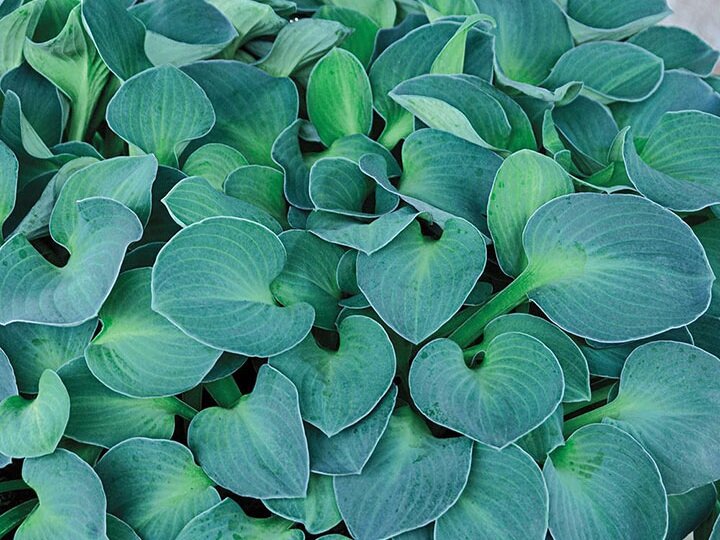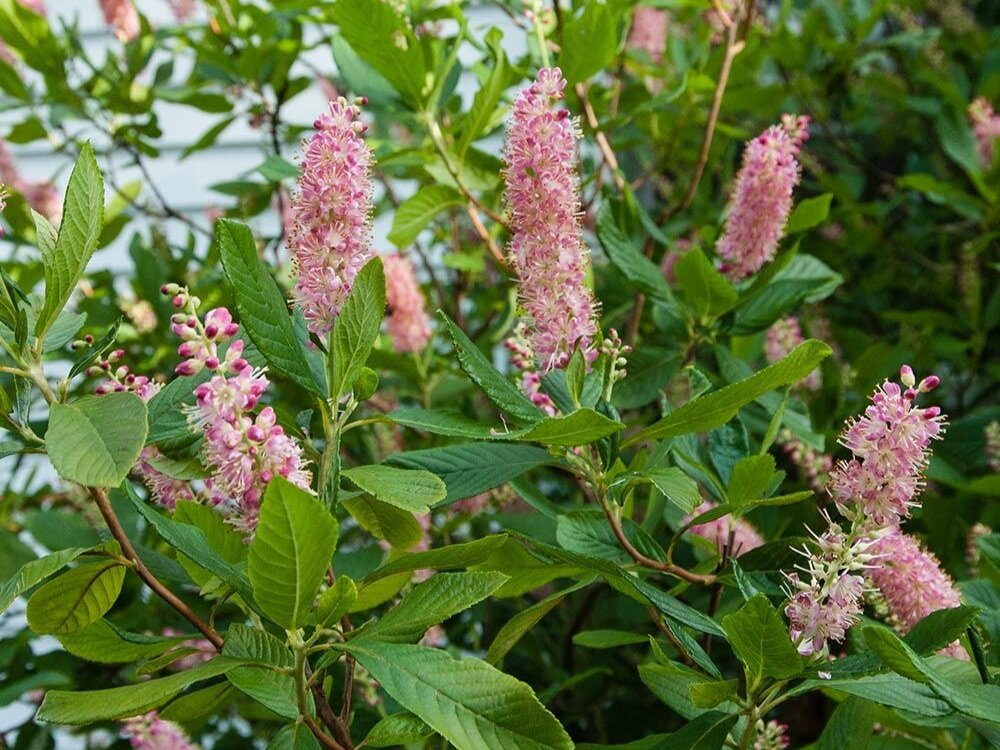Choosing the right plants for shade gardens — just look at the complexity of plants on the forest floor next time you take a hike.
TOO MUCH SHADE IN THE GARDEN!
A common refrain we hear from frustrated homeowners …”I have too much shade, I can’t grow anything in my garden!” This is all but true. There are great and appropriate plants for all growing conditions.
The most common “go-to” plants for shade gardening are hostas, ferns, and yew shrubs. The shady understories of forests are filled with a dense array of native plant material wherever you may wander. Shade plants, especially indigenous species suited to the local conditions are among the most beautiful and tolerant. Shade plants often have thin leaves with large surface areas. Thus they are anatomically adapted to be efficient photosynthesizing in low light.
Hosta ‘Undulata picto’ appears to have brush strokes of white on each stem. It is a rhizomatous, clump forming perennial native to woodlands in Japan, Korea, China.
Taxus x media (Yew) is an excellent evergreen for shady conditions, whether you prune it into a hedge or allow its natural form to take place.
While every plant needs light to grow and flourish, the right amount of sunlight varies. Given the right conditions, plants can succeed virtually everywhere! Remember the holy axiom of gardening - “RIGHT PLANT, RIGHT PLACE.”
When designing a garden, our office creates a sunshade study of the landscape to help inform us on-site conditions. We create a three-dimensional rendering of the light patterns throughout the year. This assists in plant selection, along with conditions such as soil quality, water quality, wind quality, disease, and pest interactions. In selecting plants for a site, a homeowner should also observe the type of light present in the garden throughout the day and throughout the growing season.
Defining Shade
Here’s a review of light conditions in the garden…
First, determine if the area considered is partial sun or partial shade? A fine line differentiates the two. Partial sun means the amount of sun isn't full sun, yet not partial shade. Most references put this between 4-6 hours of sun a day. Partial shade means the amount of sun is less than partial sun, but more than shade, typically defined as 2-4 hours of sun per day. Find this in areas that get direct morning sun (on the east side of buildings) or afternoon sun (on the west side of structures) but none at midday, from about 10:00 to 2:00 p.m.
Shade by definition is lack of sunlight, but in gardening terms, this means less than two hours of sunlight a day.
Light shade sites receive partially filtered sun, such as that found under open canopied trees like honey locust and birch, where there is an ever-moving pattern of sun and shade. Look for this under trees with high branches or sparse foliage. You may see light shade referred to as dappled shade or intermittent shade.
Moderate shade occurs with mostly reflected light, such as at the floor of a hardwood forest.
Heavy shade or dense shade is a site with no direct sunlight, such as at the base of a north-facing wall or below dense evergreen trees. It is important to note that all plants need some light to survive. **
Shade Gardening - Design and Plant Recommendations
Many of the townhouse gardens we design in Manhattan and brownstone gardens in Brooklyn have varying amounts of shade. Trees, shrubs, perennials produce flowers for but a few weeks, yet the foliage remains for the entire season. The solution is to focus on designing with leaf shape, leaf color, height, texture, architectural or woodland quality.
Some plants have incredibly glossy leaves that while dark, do reflect light. Groundcovers such as Asarum europaeum spread slowly creating contrast and luminosity. (Northeast USA native Asarum canadense spreads quickly providing great shape and texture.) Variegated plants or those with highlighted leaf margins (their edges) can bring visual patterns into the green space. When selecting plants because of their flower blooms, choose wisely, orchestrating interest throughout the season.
Asarum europaeum/European wild ginger had glossy reflective leaves which add brightness. It is slow growing, yet can tolerate dry conditions once established.
Asarum canadense/Canada wild ginger forms dense colonies in the understory of forests. And oh those heart shaped leaves!!
Brunnera ‘Jack Frost’ foliage brightens up any garden. (image courtesy of Terra Nova Nurseries)
Convallaria majalis/Lily of the Valley has great texture when massed. It is fragrant, tolerates deer and rabbit, a wide range of soils, but can be aggressive.
While many flowers bloom in spring and early summer, why not find a few that bloom at other times during the year? Orchestrate your plant interest and blooms throughout the year! The perennial ground cover Heuchera ‘Autumn Bride’ blooms in fall, as does Actea racemosa. Actea racemosa (previously called Cimicifuga) is a perfect plant for a small garden design and brings in pollinators! In tiny gardens or smaller spaces, consider plants whose form is more architecturally vertical, such that its tendency is to grow taller than wider. Additionally, green is not the only color for foliage! Try cultivars with purple or maroon coloration in their foliage.
Bring in the pollinators with the early fall blooms of Actea racemosa.
‘Angel Wings’ is one of many Tiarella cordifolia cultivars with exciting foliage.
Shrubs: Camellias puts on its show from late summer into fall and through December, depending on where you live and which variety you’re growing. Plants thrive in light-medium shade. A woodland setting provides perfect light. Look for hybrids that open flowers in pink, red, white and ruby tones. Hardy in Zones 7 to 9.
Clethra alnifolia is a versatile shrub can grow in full shade, full sun and anywhere in between. Include summersweet in butterfly and rain gardens. We like the cultivar ‘Ruby Spice’. Watch for suckering and shape it regularly.
The glossy leaf of Camellia japonica brightens a shade garden even in late winter.
Cornus alba ‘Ivory Halo’, also referred to in the industry as ‘Bailho’ has creamy white margins on the leaf. The outside edge helps to highlights the plant and create contrast against plant patterns.
Whether it be evergreen Rhododendron maximum or deciduous Rhododendron periclymenoides (Pinxterbloom azalea) are ‘must have’ woodies in a shade garden.
Whether edging borders, planting under taller plants or creating container arrangements, the foliage of shade plants offer endless design possibilities to create a perfect garden. Here’s a lovely planting scheme featuring three types of ferns, Hosta ‘Abiqua’, primulas, geraniums.
If you are looking for additional resources on shade planting there are many good resources. One blog post I especially like is found here.at insteading.com
** Definition adapted from Penn State Horticultural Extension.

















